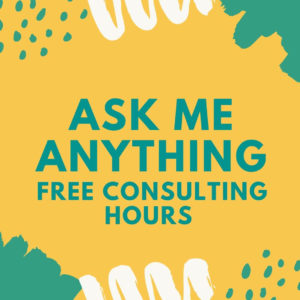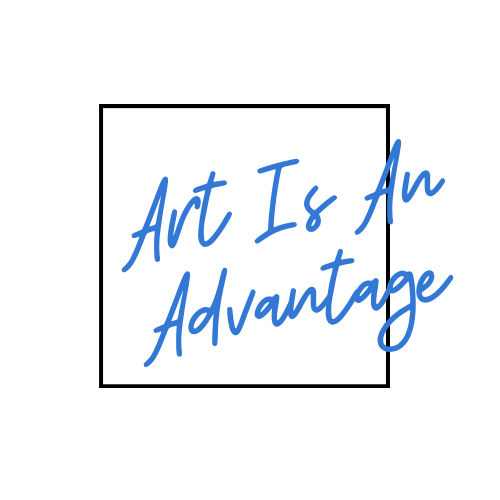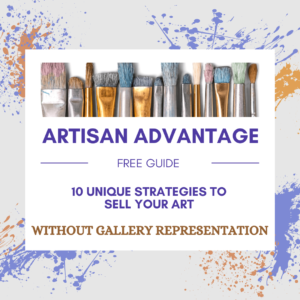by Rebecca Sciullo | Apr 13, 2020 | Artist Blogging 101, Learning
Let’s Look Inside Your Blog
 Once you set up your blog on your chosen platform, you will soon be ready to start posting. Before you do, take some time to understand the basic structure of your blog. This information pertains mainly to self-hosted WordPress or WordPress.com, but you will find that most platforms have similar features.
Once you set up your blog on your chosen platform, you will soon be ready to start posting. Before you do, take some time to understand the basic structure of your blog. This information pertains mainly to self-hosted WordPress or WordPress.com, but you will find that most platforms have similar features.
Your Blog Components
Posts
Posts are individual entries that you will write on your blog. They can include content in the form of text, images, or videos. In your WordPress dashboard, there is a tab labeled “Posts” that you’ll click on to write your new blog posts. This area is where you will spend most of your time working. As an example, here is a link to a chronological series of blog posts from “Artisan Advantage”.
Pages
As I posted about last week, your blog is a website, and as such, there are some traditional web pages that you should add to it. You should find a tab labeled “Pages” where you can add them to your site. Pages are for more static, timeless content. On Artisan Advantages, I have pages such as About, Resources, and Contact.
Media
This section is the library where all of the images that you upload to your website will be stored. You can add, delete, or edit images, video, and audio right here. When you add an image to a blog post, you will retrieve it from your Media gallery.
Comments
Read, moderate, or respond to comments posted on your blog in this area. Comments are optional, and you can decide whether or not you want to enable them.
Appearance
For WordPress, this is where you will manage the entire look and layout of your website. Manage themes, widgets, menus, and customization in the Appearance section.
Plugins
A plugin is a piece of software that acts as an add-on to a WordPress website. For self-hosted WordPress, you must set up specific plugins for your site, which I will go into more detail in a later post. Plugins are one of the most important benefits of using a self-hosted WordPress blog. Plugins can extend functionality or add new features to your blog. For WordPress.com, only certain packages give you the ability to add plugins.
Learning Curve
Don’t be discouraged if some of this seems confusing or overwhelming when you open up your blog dashboard. If you work at your blog consistently, over time, using these components will become second nature to you.
For a more detailed description of the inner workings of self-hosted WordPress, download my Artist Blog Set-up Guide.
If you are not using WordPress, then visit the Knowledgebase or Help Center of your chosen platform to review how each of these components works.
For a quick session where I can answer some of your questions, consider a complimentary “ask me anything” Consulting Hour.
For more intensive help, consider my Artist Blogging Services.
Thank you to KOBU Agency on Unsplash for the photo!
by Rebecca Sciullo | Apr 11, 2020 | Consultations
Would you like some free consulting to help you with your visual art business?
How It Works
I am opening up time to work with one artist every day, Monday through Friday. The sessions will be in place until stay at home orders are lifted here in Pennsylvania.
These are “Ask Me Anything” hours where I will take time to help you with your visual art business.
 “Ask Me Anything” Hours are available on a first-come-first-serve basis. I have allotted 6o minutes for each session, so I ask that you provide me with some information before our meeting to make it worthwhile. Please fill out the form below to take advantage of this opportunity. I will respond as soon as possible to let you know if a session is available for the coming week. Sessions will be facilitated via Zoom.
“Ask Me Anything” Hours are available on a first-come-first-serve basis. I have allotted 6o minutes for each session, so I ask that you provide me with some information before our meeting to make it worthwhile. Please fill out the form below to take advantage of this opportunity. I will respond as soon as possible to let you know if a session is available for the coming week. Sessions will be facilitated via Zoom.
by Rebecca Sciullo | Apr 8, 2020 | Artist Blogging 101, Artist Websites, Learning
As you can see from prior posts, Artisan Advantage focuses primarily on blogging for an art business. The recent post, Choosing a Platform for your Artist Blog, talks about the different services that you can use for setting up a blog.
With all of this information about blogging, I want to make sure that one thing is clear.
Your Blog Should Be a Part of Your Website.
That is, while you can have a site that consists only of blog posts, it makes more sense to have a robust website that includes a blog.
There are some basic pages that every site should include.
Christina Hills is offering this free checklist as she ramps up for her Website Creation Workshop Course. This guide provides information for anyone looking to build a website for a business

Whether you currently have a website or are looking to create a new one to house your blog, this checklist provides some great information that can help you make sure you have everything you need to make your site the best it can be.
In it, you will discover exactly which web pages you need to include if you want to attract customers.
Christina also shares her advice on which pages you can wait until later to create because she knows one of the biggest hurdles is getting overwhelmed by having too much to do!
My favorite resources are actionable, quick to implement and produce immediate results. This guide is one of them.
Don’t waste your valuable downtime over the next couple of weeks on Netflix and YouTube. Spend this time renewing a resource that will contribute to your long term growth!
Check it out:
CLICK HERE for your free Website Creation Checklist

Disclosure: Some of the links in the post above are “affiliate links.” This means if you click on the link and purchase an item from Christina Hills I will receive an affiliate commission. Regardless, I only recommend products or services I use personally and believe will add value to my readers.
by Rebecca Sciullo | Apr 6, 2020 | Artist Blogging 101, Learning
How to choose a domain for your blog.
A domain name is what someone types into their internet browser to find your website. My domain name, for instance, is www.artisan-advantage.com.
For an artist, a domain name should be a relatively easy choice. You will likely want your name to be the focus of your domain name.
A domain name might end in .com, .net, .org, or a country code like .us (United States). “URL” or “web address” are other names for a domain.

Register Your Domain Name
When you register a domain name, no one else can register it. Try to keep your domain name simple and easy to remember. If another website is using your preferred domain name, then you won’t be able to use it. In this case, you should come up with an alternative. While .com domains are typically the most preferred domain, but you could see if your name choice is available as .net.
For example, let’s say I wanted to set my domain up as beckysciullo.com, but someone else was using it, I could try a variation such as one of the following:
beckysciulloartist.com
beckysciulloart.com
rebeccasciullo.com
beckysciullo.net
Your domain name is not a “make or break” factor for your site. As long as it is clear that visitors have found your art site, you are doing your job. Give yourself a day or two to think about it, and then make a decision.
For more detail on choosing a domain name, download my free Artist Blog Set-Up Guide.
If you have questions about setting up your domain, drop me a line at becky@artisan-advantage.com.
by Rebecca Sciullo | Apr 4, 2020 | Artist Blogging 101, Learning
How to Choose a Platform For Your Artist Blog
Before you can start blogging, you need to decide which platform you will use. Read through this guide on how to to make a good choice.
Do you already have a website?
If you have a website for your art business, it may already have a blog function built-in. Many artist build sites on blog platforms but don’t use the blogging feature. If this describes your website, then it isn’t too difficult to start blogging. Some common platforms that have blogging features include Squarespace, Wix, and Weebly. If you are using another platform to build your blog, that is fine. You should still find Artist Blogging 101 helpful as you move through the process of developing your blog.
By using the Help or Knowledgebase of your current website platform, you should be able to find detailed instructions on how to use your blog feature.
Do you need a new website?
If, however, you have an outdated website that does not offer a blogging feature, or you are starting from scratch, you need to decide on which platform to build your blog.
My Recommendation is Self-Hosted WordPress
My top choice for both websites and blogs is to use self-hosted WordPress.org. WordPress.org is the most popular platform in the world. It offers the most flexibility for design, and it is what I use for Artisan Advantage. It does take a little longer to master than some other platforms, but if you stick with it, it becomes easy to use. I tried many different platforms, including Typepad, Blogger, Squarespace, and WordPress.com, before deciding that self-hosted WordPress.org is my favorite.
What does it mean to be self-hosted?
A website being self-hosted means all the files for the site are stored on a computer connected to the internet. A web hosting company gives your website a permanent location on their server. I recommend using Bluehost, but there are plenty of other web hosts out there. To get the best deal, you typically have to pay for a year of hosting upfront.
A Recommended Alternative to Self-Hosted WordPress
If you are interested in trying out blogging for your art business but are not sure that you want to invest the time learning to use WordPress, then I recommend setting up a site on WordPress.com. To set up a blog on WordPress.com, go here. The WordPress.com system will walk you step by step through the set-up
Are You Still Confused about WordPress.com vs.Self-hosted WordPress.org?
Check out this video from Christina Hills at Website Creation Workshop. She does a great job of explaining the differences.
Would You Like Some Help?
I can offer the following solutions if you would like assistance in developing your blog:
This free guide will walk you through the set-up of a self-hosted WordPress blog.
Christina Hills offers a Website Creation Workshop a couple of times a year, where you can learn how to build a self-hosted WordPress website from scratch. I highly recommend this workshop and will be sharing some information later this week about her next session. I used her course to build Artisan Advantage. She is still my go-to resource for all things WordPress. Christina’s program ensures that you will be completely self-reliant in managing your WordPress site once you finish her course.
My Artist Blogging Services help artists who already have a blog or website and would like some assistance with blog development and growth.
Just Do It!
Your blog will never be perfect. You will always be changing and improving. In my years of blogging, one thing I learned is that sometimes you just have to start.
If starting a blog for your visual art business is something that you’ve wanted to do, I encourage you to get started today using one of the resources above or following allowing with Artist Blogging 101.
Disclosure: Some of the links in the post above are “affiliate links.” This means if you click on the link and purchase the item, I will receive an affiliate commission. Regardless, I only recommend products or services I use personally and believe will add value to my readers.
 Once you set up your blog on your chosen platform, you will soon be ready to start posting. Before you do, take some time to understand the basic structure of your blog. This information pertains mainly to self-hosted WordPress or WordPress.com, but you will find that most platforms have similar features.
Once you set up your blog on your chosen platform, you will soon be ready to start posting. Before you do, take some time to understand the basic structure of your blog. This information pertains mainly to self-hosted WordPress or WordPress.com, but you will find that most platforms have similar features.




